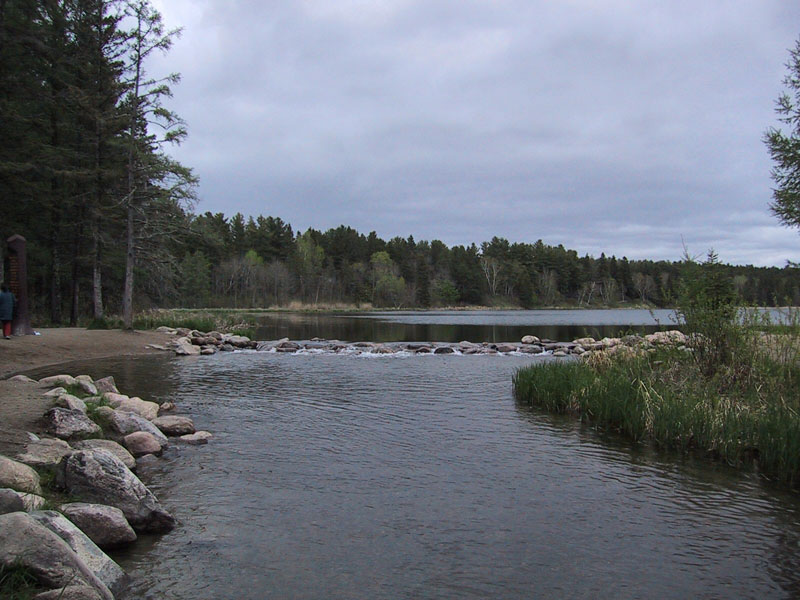Habitat
Ichthyomyzon unicuspis thrive in bodies of freshwater (especially lakes located close to rivers) in North America, especially in the Midwest. This includes the Great Lakes located between the United States and Canada. Silver Lamprey spawn in vegetation with loose sediments. Because the Silver Lamprey live in aquatic environments without fins for movement, they must have a very strong tail. Experiments have been performed to help scientists further understand the anguilliform movement (eel-like movement) of the lamprey species (Leftwich et al. 2012).
Shown above is Lake Itasca, the source of the Mississippi River. Many Silver Lamprey can be found in the Mississippi River.
Ichthyomyzon unicuspis can be found in the
Midwest, especially the Mississippi River. Silver Lamprey are
densely populated in Lake Pepin, which is connected to the
Mississippi River (Cochran & Lyons 2010). Because
Ichthyomyzon unicuspis are parasitic, they are primarily
found where Paddlefish reside. A single Paddlefish in Lake
Pepin was found to have as many as 10-25 lampreys attached
(Cochran & Lyons 2010).
In 2005, the Silver Lamprey was found in Arkansas for the first
time, attached to their host, the Paddlefish (Robison et al.
2010). Studies done on the Silver Lamprey have shown that the
temperature and time of year does not waver the amount of Silver
Lamprey found in freshwater habitats (Cochran & Marks 1995).
Silver Lamprey can be difficult to count in relation to
population size because they produce offspring (larva) via
metamorphosis (Cochran & Marks 1995). However, it has
been found the Silver Lamprey have a large body size, with the
population consisting of more females than males. Females
achieve a larger body size (Cochran & Marks 1995).
To find additional information, check out the adaptation page.
